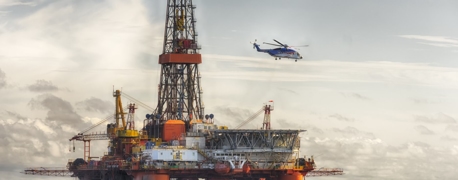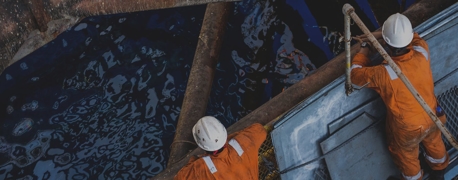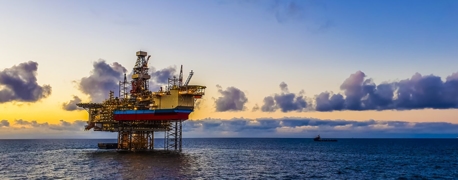New 'HOT' Pipeline Coatings for Deeper Drilling: The Danger for Workers

In February 2024, the Deepsea Yantai was granted a permit for exploratory drilling in the Duva field in the North Sea. It’s appropriate for the Yantai to dig these exploratory wells—the rig is designed for harsh environments, able to function in subzero temperatures and in water depths of up to 500 meters, and can drill to a depth of about five miles.
But the real issue for a well that deep isn’t cold, it’s the heat.
Five miles of depth is in the range of some of the deepest oil wells in the world: the deepest well in Asia is about 6 miles, and the Deepsea Horizon drilled to a depth of around 6.2 miles. At those depths, the temperature around the drill pipe increases by 77 degrees Fahrenheit every 1,000 yards.
At that temperature, pipeline coating becomes soft and pliable, at which point it’s more likely to degrade. In the industry, this is known as the coating’s “glass transition temperature.” Experts recommend drilling rigs use coatings that have a glass transition temperature 9–18 degrees higher than the worst temperatures they expect to endure.
Until recently, these coatings had a hard limit—which meant the deepest wells had a hard limit as well. Older fusion-boded epoxy coatings, or FBEs, had an operating limit of 230 degrees. But with the advent of new high-operating temperature FBEs (or HOT FBEs), new coatings can withstand temperatures as high as 392 degrees. Such a huge leap forward in durability means rigs will be able to drill to deeper depths than ever before.
Whether that’s a good thing remains to be seen.
Bottomless Appetites & Bottomless Pits
In 1866, the first oil well in Texas only went to a depth of 100 feet. But by 1949, the average well depth was a staggering 3,600 feet. In 2008, it had nearly doubled to between 6,000 and 7,000 feet. Almost from the dawn of the oil extraction industry, companies went as deep as technology allowed.
But why?
The answer is in how oilfields develop in the first place. Millions of years ago, dead plants and animals were buried under layer upon layer of rock and sand, where heat and pressure turned organic material into crude oil deposits. A relatively small number of these oil deposits existed near the surface, so industrialized oil production used up these shallow reserves fairly quickly.
That’s been the cycle ever since: oil and gas extraction uses up the reserves found at certain depths, so drilling companies need to invest in finding even deeper deposits.
Is there a limit to how far we can go? Today, the deepest oil well in the world is Exxon Neftegas’ Z44 Chayvo in eastern Russia. It’s 7.5 miles deep—nearly 400 times the depth of that first well in Texas. It was once an outlier, but recent well projects have begun to approach the limits set by Z44.
That’s why the development of HOT FBEs is significant: the ceiling (or rather the floor) has opened up.
Limited Safety Benefits of HOT FBEs
Companies will likely be drawn to the efficiency advantage provided by HOT FBEs, which have a higher glass transition temperature without losing flexibility—a common tradeoff for old FBEs. These old FBEs had to be installed 40 feet at a time onshore and then assembled offshore. New FBEs can be installed 1,000 yards at a time onshore, which does provide some safety benefits to workers.
On the surface (no pun intended), HOT FBEs offer an important stability upgrade to deep-sea drilling operations. Higher temperature tolerance means pipelines will corrode more slowly, fail less often, and require less frequent replacement. All in all, less corrosion and longer performance means fewer hazards for offshore rig workers.
But the real draw of HOT FBEs isn’t making workers safer; it’s the ability to drill at new and increasingly hazardous depths. If oil companies use HOT FBEs to their limit, the rate of corrosion won’t actually go down; if anything, it just means a pipeline could fail at untold depths.
The New Frontier
Both literally and figuratively, humans have barely scratched the surface of the Earth’s depths. In some ways, we know more about the moon than we do about the conditions beneath our feet or on the ocean floor. The difference is that when we sent astronauts to space, the risks were made clear to them.
What oil and gas extraction companies ask of drilling crews is to play the role of frontier explorers without disclosing the real and unknown risks of digging deeper and deeper into the planet. And when workers are injured at sea while managing absolutely unprecedented temperatures, pressures, and materials, these same companies will leave them hanging out to dry.
HOT FBEs could be seen as a breakthrough in lowering the cost of well maintenance while protecting drilling crews and ocean ecosystems from pipeline failure. Instead, it’s been marketed as a tool for pushing deeper and deeper into the abyss, with no time to ask if that’s even the best use of this technology—or who might pay the price if something goes wrong.


